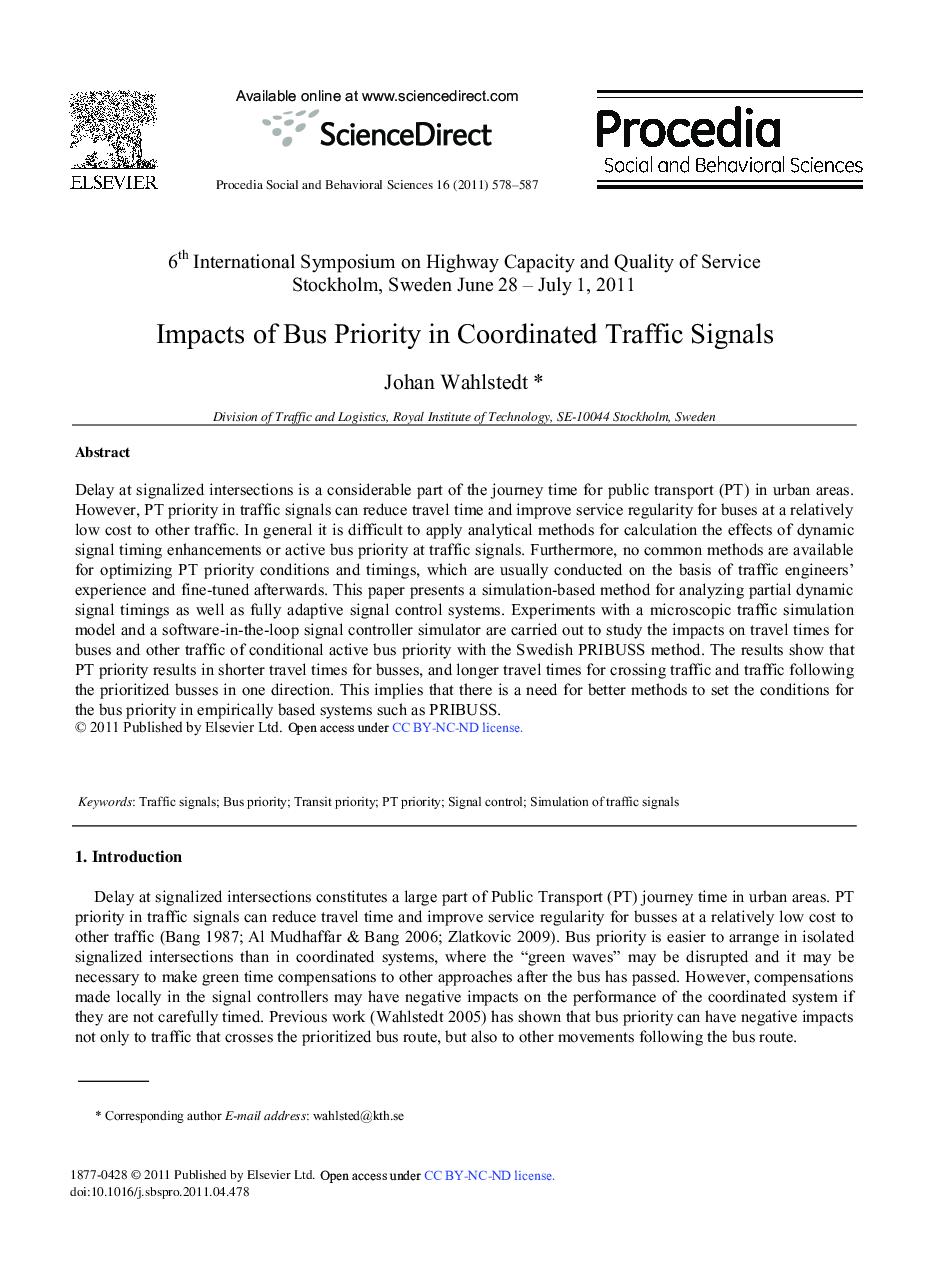| Article ID | Journal | Published Year | Pages | File Type |
|---|---|---|---|---|
| 1124189 | Procedia - Social and Behavioral Sciences | 2011 | 10 Pages |
Delay at signalized intersections is a considerable part of the journey time for public transport (PT) in urban areas. However, PT priority in traffic signals can reduce travel time and improve service regularity for buses at a relatively low cost to other traffic. In general it is difficult to apply analytical methods for calculation the effects of dynamic signal timing enhancements or active bus priority at traffic signals. Furthermore, no common methods are available for optimizing PT priority conditions and timings, which are usually conducted on the basis of traffic engineers’ experience and fine-tuned afterwards. This paper presents a simulation-based method for analyzing partial dynamic signal timings as well as fully adaptive signal control systems. Experiments with a microscopic traffic simulation model and a software-in-the-loop signal controller simulator are carried out to study the impacts on travel times for buses and other traffic of conditional active bus priority with the Swedish PRIBUSS method. The results show that PT priority results in shorter travel times for busses, and longer travel times for crossing traffic and traffic following the prioritized busses in one direction. This implies that there is a need for better methods to set the conditions for the bus priority in empirically based systems such as PRIBUSS.© 2011 Published by Elsevier Ltd.
